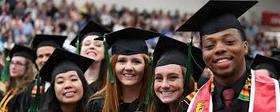A new program sponsored by the State Bar of California’s Council on Access and Fairness is creating new partnerships between 24 California community colleges and six law schools that will create a new pathway to law school for thousands of community college students. The Community College Pathway to Law School Initiative is a “pipeline program” that will offer community college students various resources to help them achieve their dream of practicing law. From tutoring and mentoring services to financial aid counseling and early exposure to law-related courses, the program will increase access to law school by making the transitions from a two-year institution to a four-year institution to law school occur much more smoothly.
Seeking to Improve Diversity
At the heart of the program is a desire to increase diversity in California’s law schools, which traditionally have been overwhelmingly white. For example, about 70 percent of the University of California at Davis’ Law School identifies as white. Furthermore, throughout the first decade of the 2000s, although the number of available seats in law schools throughout the country increased, the percentage of black and Mexican-American students filling those seats declined. However, not all law schools in California lack diversity. The law school at the University of California at Irvine, which opened in 2009, boasts a 45 percent minority enrollment.
While UC Irvine has successfully attracted minority students, the percentage of minority applicants denied admission to law schools across the nation still far exceeds that of whites. In 2008, 61 percent of black applicants and 46 percent of Mexican-American applicants were denied acceptance to the nation’s law schools, as compared to 34 percent of white applicants. This trend has persisted even though African-American and Mexican-American students significantly improved their Law School Admissions Test (LSAT) scores. The result is that of the tens of thousands of yearly law school graduates, blacks comprise less than 8 percent, while Latinos comprise less than 6 percent.
Providing a link between community college and law school can help increase the diversity of students who apply to and are accepted to study law because community colleges tend to be highly ethnically diverse, especially in California. Data from the Fall 2013 semester reflect this diversity: According to the California Community Colleges Chancellor’s Office, over 40 percent of the state’s community college students are Hispanic, with nearly 11 percent identifying themselves as Asian and just under 7 percent reporting that they are black. Just 29 percent of the state’s community college students are non-Hispanic whites. These numbers are somewhat in line with national trends as well. Over 50 percent of all Hispanic college students in the United States attend a community college, while 52 percent of Native American students, 45 percent of black students, and 45 percent of Asian/Pacific Islander students also attend a community college. Tapping into this racial, ethnic, and cultural diversity is sorely needed in the field of law in California and across the nation.
Additionally, students attending a community college tend to be more socioeconomically disadvantaged than most law school students, who generally come from a privileged economic upbringing. Community college students also tend to be older, have kids, and work part-time or full-time. But because community colleges are less expensive, have many night and weekend class offerings, and have many distance education courses, many poor, first-generation college students find themselves at a local community college. In fact, 47 percent of community college students nationwide are the first in their families to pursue postsecondary education. Therefore, by opening this pathway from community college to law school, the initiative can increase diversity among the ranks of California’s lawyers in terms of ethnicity and socioeconomic status.
Standards of Admission Remain
It is important to note that admissions standards are not changing – they will remain as rigorous as always. However, the Community College Pathway to Law School Initiative seeks to take some of the mystery out of applying to law school, taking the LSAT, and transferring credits from a community college to an undergraduate program at another institution. In fact, program participants receive assurances that law-related credits obtained at a community college will transfer without problem to one of the six universities participating in the program. Additionally, students who begin their law school journey at the community college level will not have to pay application fees to the participating law schools. Helping students navigate these sometimes-murky waters of the admissions process will be a special liaison who is a champion of the pipeline program. These liaisons will be installed at each participating law school so that community college students have an immediate resource available should they have any questions or concerns about the process.

Although the program makes the process of applying to law school easier, community college students will still have to compete for seats with other students who take a more traditional route to law school. They will be held to the same rigorous standards as everyone else. To prepare students for the rigors of studying law, community colleges participating in the program must offer specific courses that include a defined set of “success factors.” Among these required courses is a basic law class, such as Street Law or Law and Democracy. Additionally, community colleges, undergraduate institutions, and law schools in the program will align their coursework criteria so that students are on track from day one to acquire the knowledge and skills they need to succeed in law.
The pipeline program leads community college students toward some of the finest law schools in the nation. As mentioned above, six California law schools, both public and private, are involved in the program. The University of California at Irvine and the University of California at Davis represent the public schools, while the University of San Francisco School of Law, Santa Clara University School of Law, Loyola Law School in Los Angeles, and the University of Southern California Gould School of Law round out the private institutions in the pipeline program. As a result of this program, community college students not only have easier access to law school, but once they get there, they can study with some of the best legal minds this country has to offer.
Approximately 60 percent of California’s population comprises ethnic minorities, yet only 20 percent of the state’s attorneys are non-white. It is a similar situation nationwide – the populous is becoming increasingly racially and ethnically diverse, yet attorneys and judges remain overwhelmingly homogeneous. The Community College Pathway to Law School Initiative should help reverse that trend and make the state’s pool of practicing attorneys more reflective of the state’s ethnic makeup. While similar initiatives are not currently planned in other areas of the country, states would be well served to follow California’s lead and help facilitate more minority participation in the legal profession.
Questions? Contact us on Facebook. @communitycollegereview












